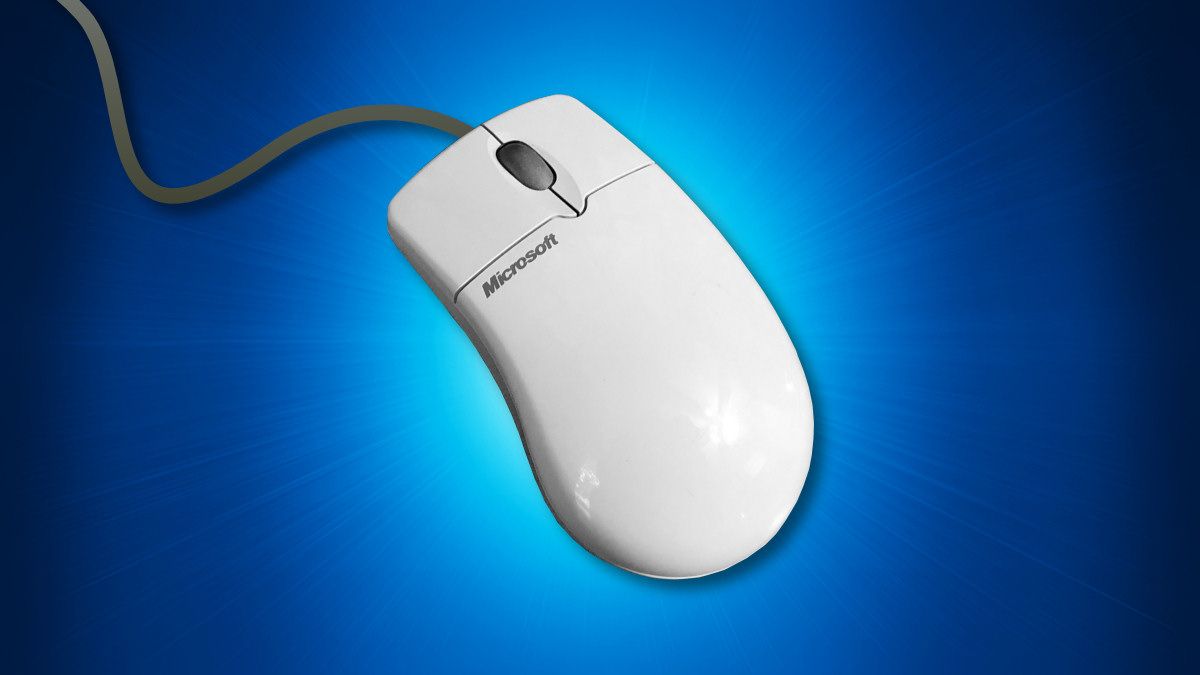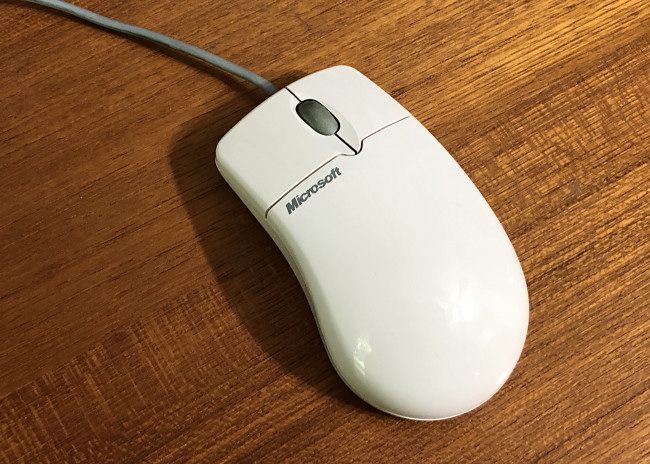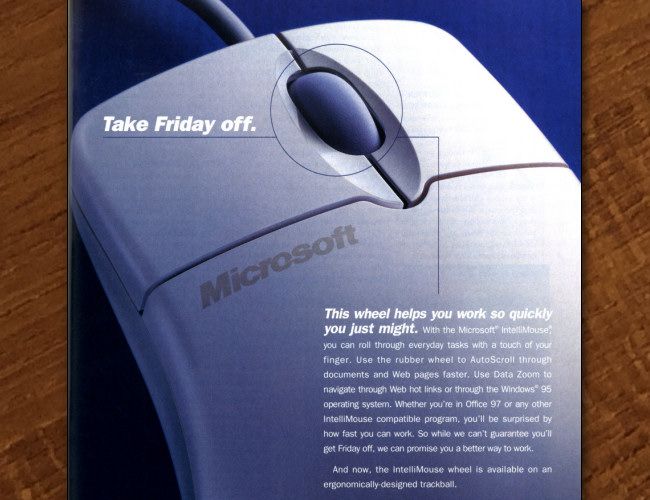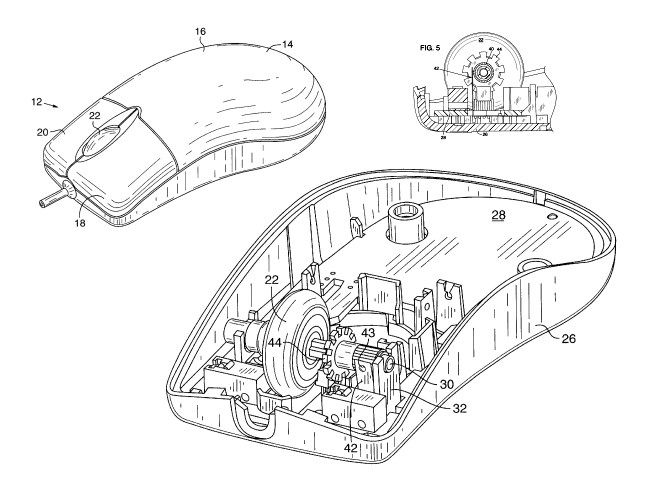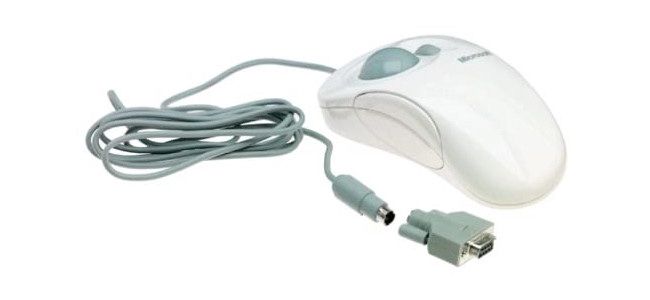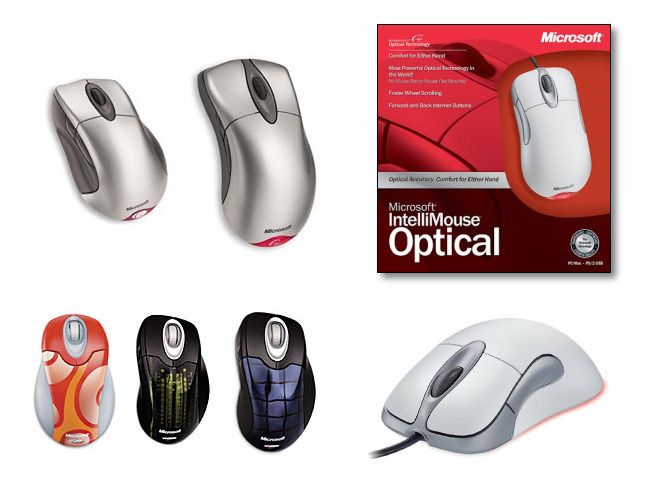On July 22, 1996, Microsoft announced its first mouse with a scroll wheel: the Microsoft Intellimouse. It wasn't the very first wheel mouse, but it set standards and made a huge impact. Here's why it was so loved.
Making Scrolling Easy
Since the invention of window-based software systems, there's been a need to let people change what information is viewed in the window. Somewhere along the way, the scrollbar was born---a user-interface element that lets you move viewable text within a window---and it became the standard way that users scrolled through text for at least a decade.
Scrollbars are handy and still in use today, but the act of finding the scrollbar on the screen and then clicking its arrows or clicking and dragging a bar slowed things down. That's why the Intellimouse felt like such a big revelation. It included a wheel that, when rotated, let you scroll through text with ease. In fact, in its initial Intellimouse press release, Microsoft wrote, "IntelliMouse eliminates the need to use scroll bars."
Notably, the Intellimouse wheel also functioned as a third mouse button that clicked when pushed down, which added more possibilities as to how it could be used.
The first Intellimouse wasn't optical yet---that wouldn't come along until the Intellimouse Explorer in 1999. No, this unit shipped with a then-traditional mouse ball, which tracked movement with a rolling, rubberized metal ball that moved X and Y positional rollers inside the mouse.
The Intellimouse retailed for $85 and began shipping in November of 1996. At launch, it only worked with Microsoft's Internet Explorer 3.0 browser, File Explorer in Windows 95, and Office 97, but that was enough to make it useful---and more support would come soon.
To bring scroll-wheel support to unsupported apps early on, Plannet Crafters created a popular shareware program called Flywheel that allowed people to use the Intellimouse with Netscape before it gained official scroll-wheel support. But other apps soon fell in line.
With endlessly scrolling websites growing in popularity at the time, the mouse wheel became a must-have productivity feature. You might say its killer app was enabling you to devour the web at record speed. Within a few years, it felt like scroll wheels had always been there.
Reinventing the Wheel
The Intellimouse wasn't the first commercial mouse with a scroll wheel. That honor goes to the Mouse Systems ProAgio Scroll Mouse (also called the Genius EasyScroll), released in 1995. It included a scroll wheel positioned between the two traditional mouse buttons, similar to the Intellimouse.
Historically, the ProAgio Scroll Mouse was an obscure product with limited distribution. We can't find any historical reviews of it in magazines from that time, so by the time the Intellimouse launched, most people had never seen it.
To what extent (if any) the ProAgio Scroll Mouse influenced the Intellimouse isn't clear, but the Intellimouse patent does cite the Mouse Systems patent invented by William G. Gillick and Ronald A. Rosenberg for a mouse wheel filed in 1991. Still, that's no evidence of influence: It's standard to discover and cite similar existing inventions when filing patents.
It's worth noting that the idea of a wheel on a pointing device predates the ProAgio Scroll Mouse, although not for scrolling text. Some trackballs, like the 1987 MicroSpeed FastTRAP, experimented with wheel-based inputs, but they usually sought to provide a way to move within the z-axis (with the trackball moving within the x- and y-axis in a program). In the FastTRAP's case, MicroSpeed described its wheel as a "Trackwheel for third axis pointing capability."
While it's clear that wheels on pointing devices go back a long way in both prototype and commercial form, at some point, someone had to apply the idea of using the "z-axis wheel" to scroll information within a window instead. That concept seems to have been independently invented within Mouse Systems and Microsoft.
Microsoft veteran Eric Michelman, the former group program manager for Excel, wrote an excellent account of the creation of the scroll wheel within Microsoft from his perspective. According to Michelman, the hardware scrolling idea originated when he sought a new way to quickly zoom in and out of spreadsheets in Excel. He rigged up a prototype using a PC joystick and presented the idea to Microsoft's hardware team, receiving a tepid response. But Michelman didn't give up.
It isn't clear exactly where the idea of adding a wheel to the mouse originated within Microsoft. Michelman wrote that after some more experimentation on his part, "The hardware guys came back and said that they had considered adding a wheel to the mouse, but they weren't sure what it would be used for."
But regardless of the wheel's ultimate origins, the Office team quickly understood that it could be useful---but they disagreed about how. After some vigorous internal debate about whether the wheel should scroll text by default (in Word) or zoom in and out on data (in Excel), the scroll function won out. With a clear purpose in mind, Microsoft's hardware team got to work crafting the mouse.
According to Michelman, Carol Clemett managed the Intellimouse project within Microsoft, and Kabir Siddiqui spearheaded hardware design, notably turning the wheel into a clickable button by request from the software team---a significant innovation. Steve Kaneko and Carl Ledbetter handled the Intellimouse industrial design, which borrowed heavily from the sleek and ergonomic Microsoft Mouse 2.0 design released in 1993. Thanks to their efforts, the Intellimouse was quite comfortable to use.
With regard to scrolling vs. zooming, the Office team ultimately reached a compromise, allowing people to hold down Ctrl on the keyboard while moving the wheel to zoom in and out. This alternate zooming behavior is still a standard feature of Windows and Windows apps today.
Launch and Legacy
After launching in late 1996, the Intellimouse received a warm reception from the press, who viewed the innovation with curiosity. They initially pointed out its limited software support, but soon grew to love it and cite it as an essential upgrade. Today, few recall that Microsoft also launched an Intellimouse trackball---which also included a scroll wheel---at the same time.
Meanwhile, the input device industry adopted the wheel-mouse idea wholeheartedly, with several manufacturers (especially Logitech) creating their own scroll-wheel mice and trackballs in short order. Variations of the scrolling idea also sprang up, including mice that used buttons or a rocker switch to scroll instead of a wheel as well as a Trackpoint mouse from IBM.
On Microsoft's part, the Intellimouse was a big commercial success. It spawned a line of successor mice and trackballs that added more buttons, optical tracking, wireless support, and more features over the following decade. Many of these well-built mice have served as cherished, nostalgic input devices for many years, with loyal owners holding onto older models for as long as possible.
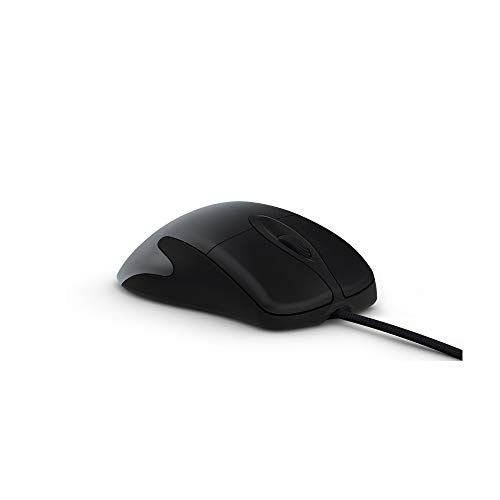
Microsoft Pro Intellimouse – Dark Shadow. Comfortable Ergonomic Design with 2 Customizable Buttons, Wired, USB, Gaming Mouse for PC/Laptop/Desktop
In 2018, Microsoft relaunched the Intellimouse brand with the Classic Intellimouse, a new variation on a classic wireless scroll-wheel design. Today, you can still buy Intellimouse models from Microsoft, including the Microsoft Pro Intellimouse, which is aimed at gamers. According to reviews, these newer models seem to continue the tradition of excellence in Microsoft Mice that goes back to Microsoft's first-ever mouse, which was released in 1983.
Happy birthday, Intellimouse!

